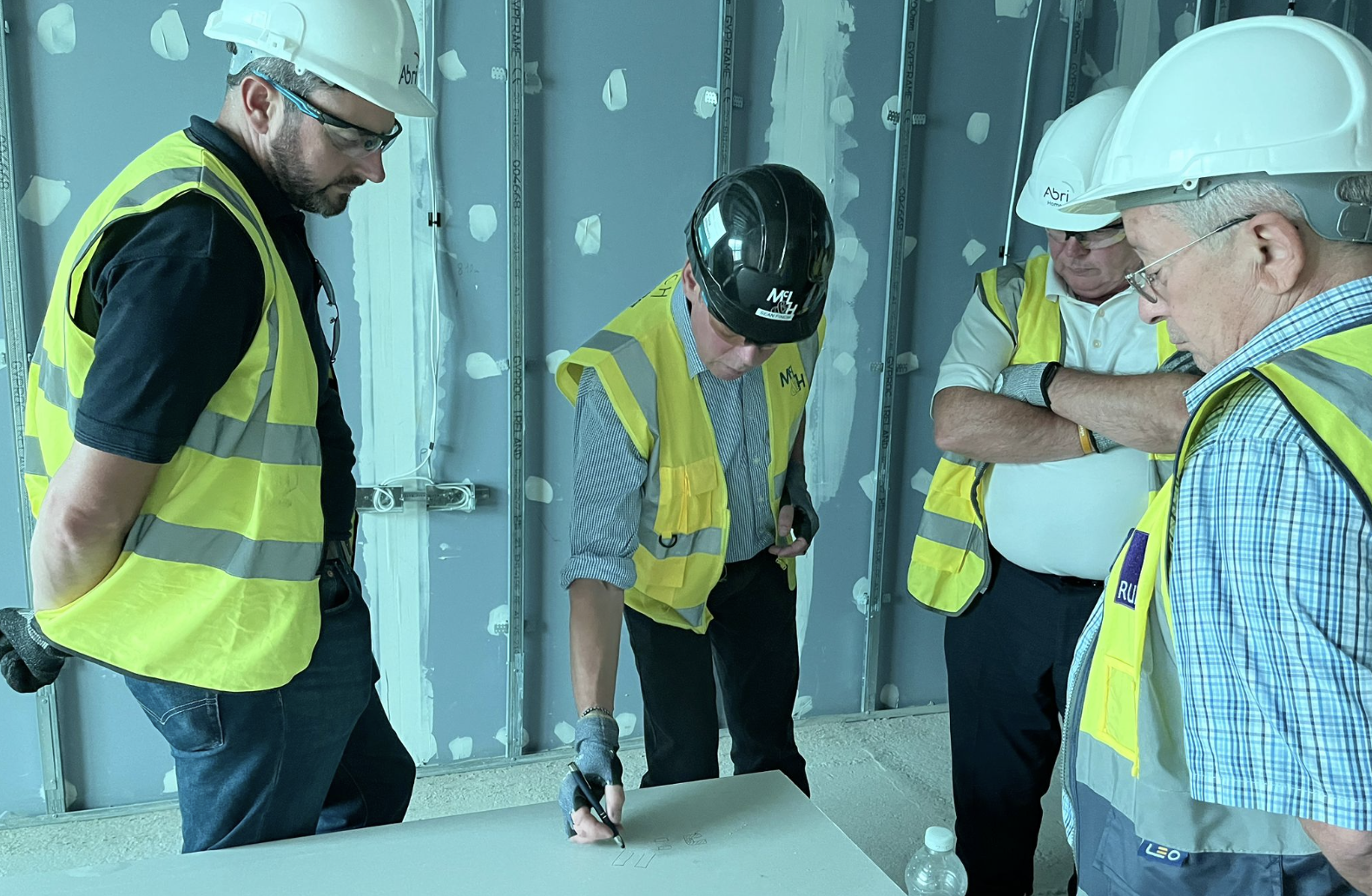
In our new blog series, we ask social housing professionals who are already delivering MMC homes to give us their practical tips on making MMC work.
Abri
Based in the south of England, Abri is one of the region’s largest housing providers, with 40,000 homes and assets and serving more than 100,000 people. On average, the group builds over 1,000 new homes a year.
Jake Snell, Abri’s head of partnerships and innovation has been delivering MMC homes as far back as 2006 when he managed timber frame construction as a site manager. He now plays an instrumental role in boosting innovation across the sector by driving forward a culture shift so social housing organisations embrace fresh ways of building homes. Here, Jake reflects on the essential ingredients to getting MMC right.
Tell us about your role
As head of partnerships and innovation at Abri, I develop new and existing partnerships. A big focus is working with internal and external stakeholders to diversify the type of new homes we build and to drive an MMC-first culture.
Why is MMC so important to Abri?
Our ultimate goal is to respond to the needs of our customers and offer them the best homes we can and ensure they’re truly affordable. They must look great, be high quality, energy efficient, cheap to run and stand the test of time. MMC ticks every box – it’s the best solution for all parties, from design to construction and the end user.
What are your lessons for delivery?
MMC doesn’t have to be all or nothing – incremental steps are fine
Construction is a pressured environment and people are often hesitant – and overwhelmed – when it comes to MMC. They think that bringing in new ways of working will add complications to design, pricing and build processes.
To make MMC work at Abri, we’ve applied a varied approach including some small steps and some bigger ones. Offsite doesn’t have to be all or nothing – you don’t immediately have to enter full turnkey territory. For us, the size of the step normally depends on the site itself, the risk appetite and the people involved.
For example, an incremental step might be installing large format versions of traditional materials, such as pre-sized plasterboard and brick slips – which fall into MMC Category 6. You could then work up to using Category 5 which covers non-structural, pre-assembled components like 3D bathroom pods.
Using MMC Category 2 systems is another incremental step. 2D panels are manufactured in factories and then assembled on site, and there are lots of variations including standard timber frames, cross laminated timber (CLT), steel, structural insulated panels and hybrid systems. Your organisation could pick a system they are more familiar with and start from there.
Research what’s in the market so you can find the best solution for each site
This might sound obvious, but people don’t always make time to get to know the different MMC products available.
With Category 2, the range is huge, as is the level of finish: from complete wall panels with brick facades, insulation, plasterboard and first fix mechanical and electrical (M&E), to large format blocks (basically traditional, but at scale) which create a primary structure (MMC Cat2a) if you include floors and roofs.
The challenge for development teams is unpacking what is included in a particular manufacturer’s Cat 2 offer and what isn’t.
For example, there has been some confusion as to whether timberframe qualifies as MMC. People see it as almost traditional because it’s been around for so long. That’s why I think we need to reset how we present MMC – sometimes it’s seen as too futuristic, and that puts some housing organisations off.
Bring all parties on board
You have to get teams right across the organisation (as well as external partners) to buy in to MMC by taking them on a journey of discovery.
That means working closely with trades people, site agents, contractors, sales teams, maintenance operatives and board members, alongside external professional services like architects and employer’s agents. Where possible, I’ve tried to show people the MMC process face to face by organising factory tours, site visits and partnering with building networks. You really can’t underestimate the importance of that discovery, engagement and culture-change piece.
This also links to another challenge around risk and who takes it with MMC. Construction professionals know how to problem solve and get over issues on site which are a mainstay of any traditional construction site. But sometimes you can encounter an attitude of, ‘it’s a tough environment already, why make it harder?’
What works here is making the argument for MMC in a way that will resonate for a particular individual. We need more site and construction managers, quantity surveyors, land managers and employer’s agents to see the benefits of doing something different. Offer the ‘what’s in it for them’ case, so they see, feel and understand MMC solutions and what they offer.
Metrics are key to driving change
There’s lots of debate about Pre-Manufactured Value (PMV), which is a way of calculating the proportion of a building’s construction that takes place offsite or near-site using MMC. It’s normally measured as a percentage of the total construction of a building and can be used as an indicator of better quality and fewer accidents. But some people say PMV is being used inconsistently.
My view is that PMV is just one tool to prove MMC. We know that points of failure are generally caused on site and by people – it’s less controlled than a factory and is subject to different abilities, environments and pressures.
In theory, if PMV is higher because more is done off site, then a home is subject to higher quality control and it’s less likely to fail. But we need to prove this and create reporting tools that offer combined metrics to measure outcomes and demonstrate the higher the PMV, the ‘better’ the product. Ultimately, I’d like to land at a sweet spot of best desired PMV to enable quality, site control and customer satisfaction.
Linking to this, I’m looking forward to using the dashboard of customer experience metrics that Building Better has been developing with Cambridge Centre for Housing and Planning Research (CCHPR). This will help Abri to improve the way we collect and analyse evidence on the delivery and performance of homes built to operational net zero and, crucially, their impact on residents.
Nurture the relationship between factory and onsite
The relationship between manufacturer and construction professionals is central. It’s something I’ve nurtured at Abri so the connection between these two very different disciplines is strengthened. But you must put the work in to open up communication and ensure there is a complementary, linked approach.
When you achieve this open and trusting relationship with a manufacturer, you can also achieve real value engineering and make a scheme work for both parties. But soft market engagement is key here. I’ve seen manufacturers who’ve been brought in very early to the design phase saying things like, “you wanted X number of homes in this layout. But if we slightly changed the configuration, we might be able to get another home on to the plot”. Those early, exploratory, trusting conversations are so important to making MMC work.
Building Better is running sessions with members’ teams to explore different MMC strategies, case studies and tips for success. These sessions are based on learnings from over 30 housing associations and councils.
Get in touch to book your session: www.buildingbetter.org.uk or trina.chakravarti@buildingbetter.org.uk

By Jake Snell head of partnerships and innovation at Abri and part of the core team at Building Better